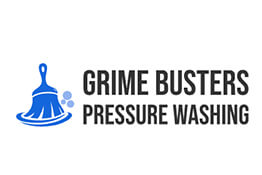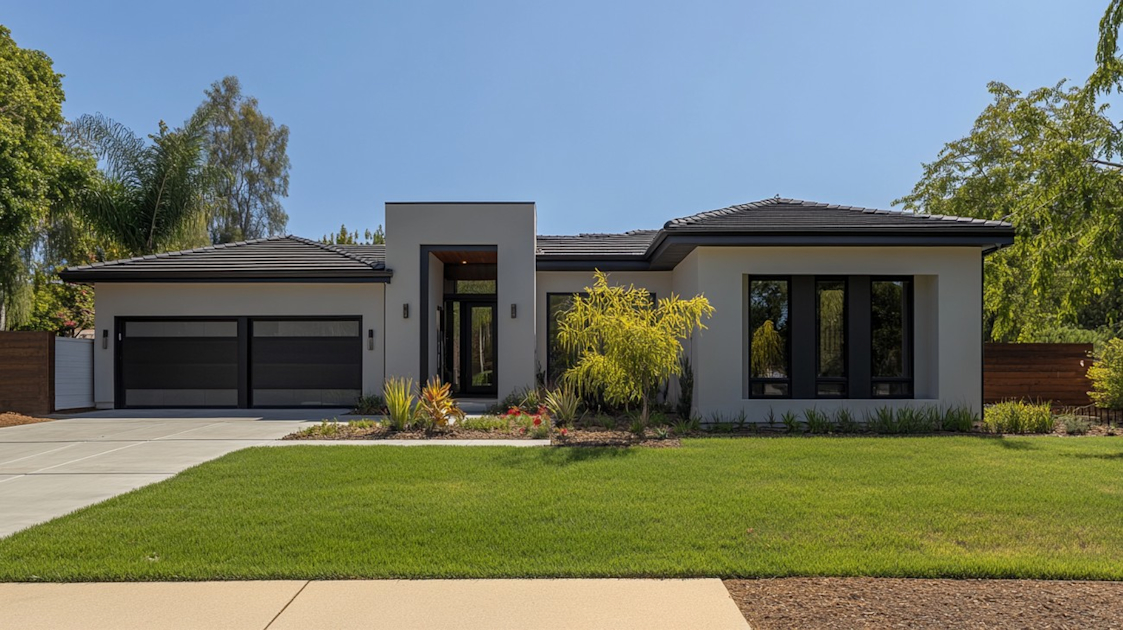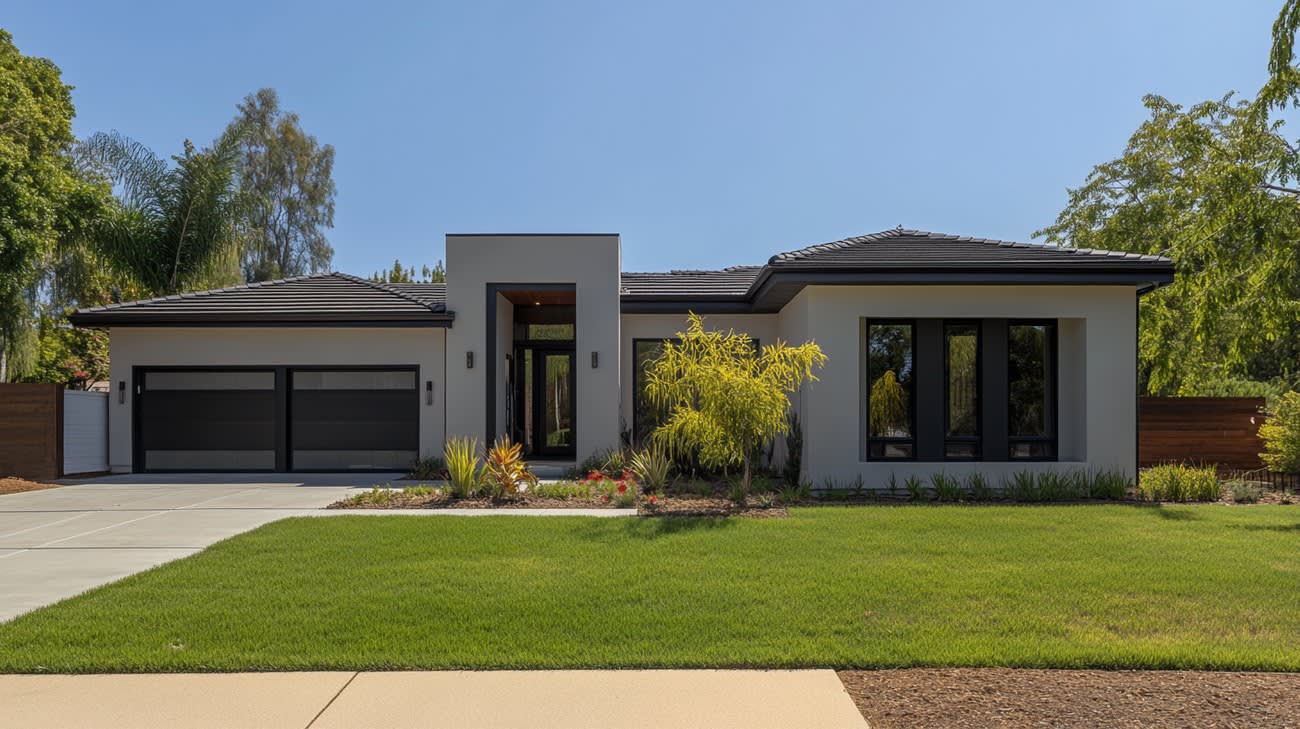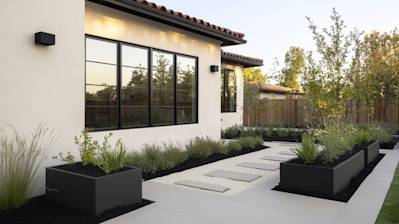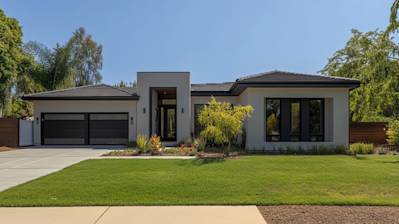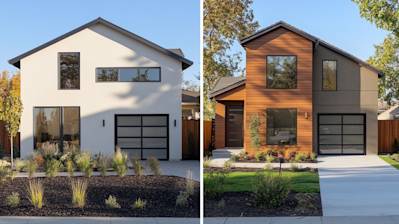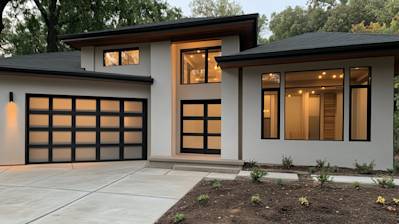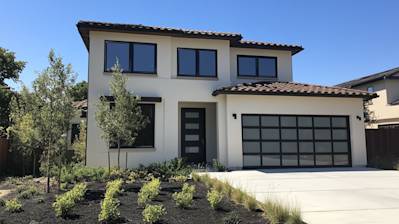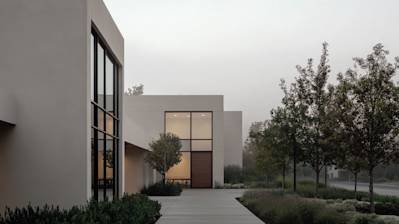If you're considering giving your home an exterior revamp, you might be mulling over the numerous cladding options available on the market. Stucco and vinyl siding are two popular options that homeowners choose, thanks to their durability, variety and aesthetic appeal. But as each exterior cladding solution has its unique values and considerations, knowing what best fits your specific requirements can feel hard to judge. This thorough, SEO-optimized article will walk you through a detailed comparison between these two materials: stucco vs vinyl siding.
Overview: Stucco and Vinyl Siding
Understanding Stucco
Originating in ancient times, stucco has retained its reputation for luxury and durability over the centuries. This type of cladding is essentially a plaster mixture made from cement, lime, sand and water, and is applied in three coats over a lath base for total thickness that ranges from 7/8 inch to an inch. It's particularly popular in arid, sunny climates because of its ability to resist heat.
Diving into Vinyl Siding
Oppositely, vinyl siding is a more contemporary, affordable exterior cladding solution. Introduced in the 1950s as a substitute for aluminum siding, it has become the most popular siding material in the U.S, appreciated for its low maintenance and variety of design options. Made primarily from PVC, a durable type of plastic, vinyl siding comes in a broad array of colors, textures and profiles offering great flexibility in design.
Comparing Cost: Stucco and Vinyl Siding
When considering stucco vs vinyl siding, cost often plays a significant role in the decision-making process.
Cost of Stucco
Stucco tends to be pricier than vinyl siding primarily because of the labor-intensive installation process. Stucco requires skilled craftsmen to ensure the mixture is applied correctly and uniformly.
Cost of Vinyl Siding
On the other hand, vinyl siding is generally cheaper, as it needs less labor and the materials are less expensive. However, premium or high-quality vinyl can increase the overall cost.
Durability: Stucco vs Vinyl Siding
Another critical factor to consider when comparing stucco and vinyl siding is durability.
Durability of Stucco
When properly installed and maintained, stucco can last up to 50-80 years, providing an impressive resistance to weather and time. Stucco provides a solid shell around your house, protecting it against fire, noise, and pests.
Durability of Vinyl Siding
On the other hand, vinyl siding can last for 20 to 40 years depending heavily on the quality of the product and maintenance provided. It’s resistant to most common types of damage like rotting or insect damage but can be damaged by severe weather and high temperatures.
Maintenance: Comparing Stucco and Vinyl Siding
The upkeep required for stucco and vinyl siding varies significantly.
Maintenance of Stucco
Stucco needs regular maintenance to minimalize the risk of cracks. It may require re-coloring every five to ten years as it can fade over time due to sunlight and weather conditions.
Maintenance of Vinyl Siding
Vinyl siding requires relatively low maintenance. It can be cleaned simply with a garden hose and a mild detergent. However, if vinyl siding becomes cracked or damaged, the affected section must be replaced.
Energy Efficiency: Stucco vs Vinyl Siding
Both stucco and vinyl siding offer different levels of energy efficiency.
Energy Efficiency of Stucco
Because of its substantial nature, stucco cladding is excellent for energy efficiency. It helps insulate your home by keeping it cooler during the summer and warmer during the winter.
Energy Efficiency of Vinyl Siding
Vinyl siding is inherently less energy efficient than stucco. Nonetheless, insulated vinyl siding – which includes a layer of foam insulation – can boost the energy efficiency of your home relatively.
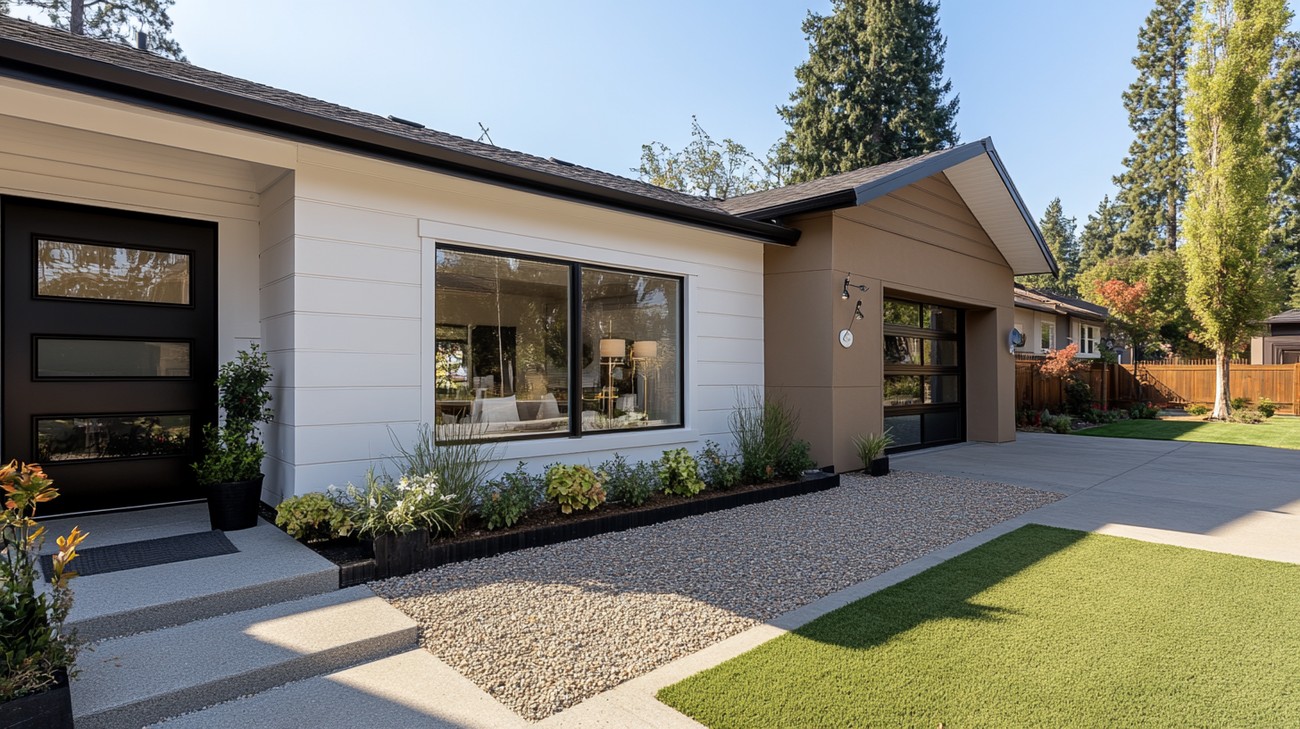
Frequently Asked Questions about Stucco Vs Vinyl Siding
How Do Stucco and Vinyl Siding Compare on Cost?
Vinyl siding is generally less expensive than stucco. The cost of installing vinyl siding ranges from $2 to $7 per square foot, while stucco installations can range from $6 to $9 per square foot. Keep in mind, however, that stucco's longevity might offset the increased cost over time.
How Easy is it to Maintain Stucco vs Vinyl Siding?
Both stucco and vinyl siding require regular maintenance to ensure longevity. Vinyl siding needs to be cleaned annually to remove mold, dirt, and grime. Stucco requires regular inspections for cracks or other damage. Stucco also needs to be painted periodically, while vinyl siding maintains its color for a long time.
How Energy Efficient are Stucco and Vinyl Siding?
Both stucco and vinyl siding offer good energy efficiency by providing insulation that helps keep the interior of your home at a consistent temperature. However, stucco is generally considered to provide better insulation than vinyl.
What are the Aesthetic Differences Between Stucco and Vinyl Siding?
Stucco offers a classic, Mediterranean style with a smooth surface and an earthy color palette. Vinyl siding, on the other hand, has a modern and chic look with crisp, clean lines. With a wide variety of colors and styles, vinyl siding provides more options for personal customization.
Can I Install Either Stucco or Vinyl Siding on My Own?
While some extremely handy homeowners may be able to handle a vinyl siding installation, it's generally recommended to hire professionals for both stucco and vinyl installations. These jobs can be labor-intensive, require specialized equipment, and done incorrectly, could negatively impact the home's value and structural integrity.
Does Stucco or Vinyl Siding Have Better Resale Value?
Both stucco and vinyl siding can enhance the resale value of your home if they’re well-maintained. However, many buyers appreciate the classic look and durability of stucco, which can boost curb appeal and potentially increase the value more than vinyl siding.

Stucco Siding
Pros of Stucco Siding
Durability and Longevity
Stucco is incredibly durable and can easily withstand the elements such as harsh sunlight, wind, and rain. It provides a robust and lasting protective layer to your home and is known for its longevity. With proper installation and maintenance, stucco can last for many decades, even up to 50 to 80 years in some cases.
Energy Efficient
Stucco is made of materials that are excellent insulators. Therefore, it can help to keep your home’s interior comfortable, regardless of the weather outside. It keeps your home warm during winter and cool during summer, potentially saving you on energy costs.
Great Curb Appeal
Stucco adds a classy and elegant look to your home. It’s unique, natural appearance combined with possibilities for a variety of textures and colors makes it an attractive choice for those interested in enhancing their home’s curb appeal.
Sound Dampening
Stucco also has soundproofing properties. It can help to reduce the amount of exterior noise that makes its way into your home, providing you with a quieter and serene living environment.
Cons of Stucco Siding
High Upfront Cost
The installation of stucco could be costly, due to the skill and labor-intensive process that is required. While the long-term durability might offset this cost, the upfront investment can be a turn-off for some homeowners.
Time-Consuming Installation
The installation process of stucco can take much longer compared to other siding options. It requires several layers for proper installation, and each layer has to dry fully before the next one can be applied.
Requires Routine Maintenance
Though durable, stucco requires routine check-ups and maintenance to ensure potential problems (like hairline cracks) are caught early before they become major issues. While the maintenance isn't necessarily frequent or intensive, it's still something homeowners will need to consider.
Vinyl Siding
Pros of Vinyl Siding
Affordability
Vinyl siding is often much cheaper than other types of siding, including stucco. Not only are the materials less expensive, but the installation process is also simpler and less labor-intensive.
Wide Variety of Design Options
Vinyl siding comes in a wide range of colors, textures, and styles. You can get it to mimic the look of wood, stone, or brick, allowing homeowners to achieve their desired look without breaking the bank.
Low Maintenance
Vinyl siding is very easy to maintain. It doesn't require painting and can be cleaned easily with a hose and soapy water. It also doesn't fall victim to common pests like termites or rot and rust issues.
Good Durability
While vinyl may not be as durable as stucco, it's still pretty resilient. It's resistant to common damages like rot and insects, and it can also stand up to most weather conditions.
Cons of Vinyl Siding
Limited Lifespan
Even though vinyl siding is quite durable, it doesn't last as long as stucco. It generally has to be replaced every 20 to 30 years.
Not as Energy Efficient
While you can buy insulated vinyl siding, it typically isn't as energy efficient as stucco. Expect to pay a bit more on your energy bills when you install vinyl siding.
Potential Damage from Extreme Weather
Vinyl siding isn't the best choice for areas that experience severe or extreme weather conditions, as it can be susceptible to hail damage and warp or buckle due to extreme heat.
Can look “Cheap”
To some, vinyl siding can appear less premium than alternatives like stucco. This could affect the curb appeal of your home and potentially its resale value.

Myths / Misconceptions about Stucco VS Vinyl Siding
When discussing exterior house coverings, stucco and vinyl siding are among the most popular choices. However, they are often subject to a host of misconceptions and myths, primarily due to misinformation, lack of knowledge, or simply word of mouth. Let's dive into and debunk some of the most prevalent myths concerning stucco and vinyl siding.
Myth 1: Vinyl Siding is More Durable Than Stucco
One of the most persistent myths is the assumption that vinyl siding holds up better over time compared to stucco. The misconception is often as a result of vinyl siding's synthetic composition which leads many to believe it is less likely to degrade.
Reality
In truth, each material has its strengths and weaknesses. Stucco is known for its durability and it can last for decades, even up to 50 to 80 years if maintained properly. It is also highly resistant to fire, pests, and harsh weather conditions.
Vinyl siding also fares well in the durability department. It is immune to rot and pests and can withstand significant temperature fluctuations. However, it is more prone to impact damage and may fade or warp over time due to extreme weather conditions.
Myth 2: Stucco is Merely Decorative
There's a common belief that stucco is just for aesthetic purposes and it doesn't provide any functional benefits.
Reality
While stucco undoubtedly enhances a home’s appeal with its attractive and unique look, it plays a crucial role beyond just visual appeal. It offers excellent insulating properties that can help keep your home warm in the winter and cool in the summer. It is also resistant to fire, an attribute rarely found in other siding options.
Myth 3: Vinyl Siding is Maintenance-Intensive
A lot of homeowners believe the myth that vinyl siding requires constant upkeep to retain its looks and functionality.
Reality
Vinyl siding certainly needs maintenance, but it’s not as demanding as this myth would have you believe. Generally, an annual power wash to remove dirt and grime is usually sufficient to keep vinyl siding in good condition. Also, unlike stucco or wood, vinyl siding doesn’t need to be repainted, which further reduces its maintenance demands.
Myth 4: Stucco Causes Mold Problems
Some people incorrectly believe that stucco siding encourages mold growth, leading to potential health hazards for inhabitants of the house.
Reality
Stucco itself is not a cause of mold problems. However, if not properly installed or maintained, water can penetrate and become trapped behind the stucco. This can create a conducive environment for mold growth. This is why it's essential to work with experienced professionals when installing stucco to ensure that it's done correctly.
Myth 5: Vinyl Siding is Bad for the Environment
Many people think that vinyl siding is environmentally unfriendly, primarily due to it being a plastic product.
Reality
While it's true that vinyl siding is made from PVC, a type of plastic, it can be quite responsible in environmental terms. This is because it boasts a long lifespan (around 20-40 years), reducing the need for replacement and adding to landfill waste. Additionally, some companies produce vinyl siding from recycled materials and make products that are themselves recyclable.
Whether you're considering stucco or vinyl siding for your home, it’s crucial to differentiate between facts and myths to make an appropriate choice based on accurate, factual information. Each material has its strengths and weaknesses, and your choice should align with your home’s specific requirements, your lifestyle, and your budget.
Summary
So, after weighing all the pros and cons, it's clear that the choice between stucco vs vinyl siding really comes down to personal preference and specific needs. Both have their unique attributes and advantages that make them suitable for certain types of climates and architectural styles. While stucco may be more durable and aesthetically pleasing, vinyl siding is more affordable and easier to maintain.
Stucco vs vinyl siding is not just about cost and maintenance, it's about the look and feel of your home. Stucco gives a classic, traditional look which can dramatically increase the curb appeal of your house. On the other hand, vinyl siding gives a modern, sleek look to your house. In the end, it's all about what suits your style and personality the best.
At the end of the day, both stucco and vinyl siding are popular choices for a reason. They both are durable, practical, and can significantly enhance the appearance of your home. The choice between stucco vs vinyl siding will ultimately depend on your budget, the climate where you live, and the particular style you're seeking for your home. While stucco might be the go-to choice for a hot and dry environment, vinyl siding might be a better fit in a moist and colder climate. But no matter what you choose, both options will give your home a fresh, new look.
About Atlas Stucco
Atlas Stucco, located in Sacramento, CA, is not your typical stucco company. With a blend of top-notch skill, undeniable passion, and an unmatched drive for perfection, we've become a household name in the stucco industry. Our team consists of professionals who take pride in offering superior quality work that complements the unique needs and designs of your homes. We believe in not just meeting expectations, but consistently exceeding them. So whether your stucco needs are big or small, complex or simple, residential or commercial - we've got you covered. At Atlas Stucco, we're transforming your visions into a reality, and we're not satisfied until you are.
Tags: stucco, vinyl siding, home renovation,
